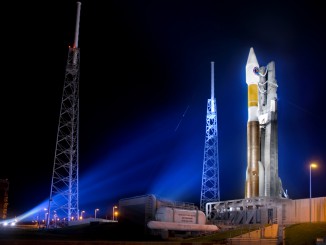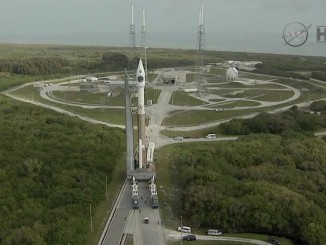The United Launch Alliance Atlas 5 rocket that successfully hauled a NASA satellite quartet into a highly elliptical Earth orbit Thursday was fitted with three onboard video cameras that captured some of the major events of ascent.
The rocket blasted off at 10:44 p.m. EDT (0244 GMT) from Cape Canaveral’s Complex 41.
An external, aft-facing camera watched as the main engine, shaking loose ice as the vehicle departed the launch pad on 1.6 million pounds of thrust.
“The countdown went very well,” NASA Launch Manager Omar Baez said. “We really worked absolutely no launch vehicle or spacecraft issues, the range was green and the flight was nominal. Picture perfect.”
Atlas executed its roll program after clearing the tower, as the complex below rotated out of view for the flight downrange.
The next major event was separation of the twin solid rocket boosters about two minutes and 20 seconds into flight.
Then came staging from the engine-bay camera on the Centaur upper stage, which provided crisp views of the first stage jettisoning and the RL10A engine coming to life.
And the third camera, forward-facing one of Centaur, shows the spinup and separation of the fourth and last MMS spacecraft.
“This evening unfolded essentially perfectly for us,” MMS Project Manager Craig Tooley said of the countdown and flight.
“It appears all four are where they need to be,” Baez said. “You can’t ask for anything more.”
See our earlier MMS coverage.
And see our Atlas archive for further information.



